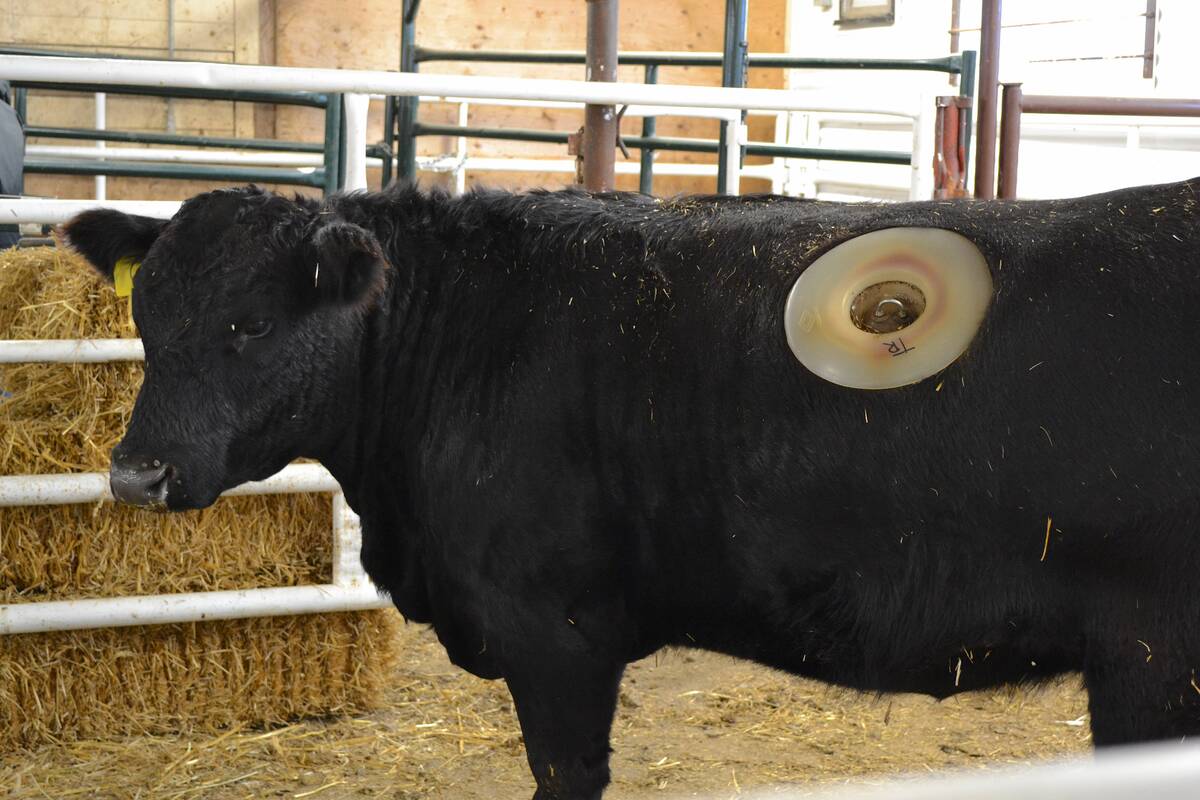A shortage of workers is the biggest challenge facing Alberta’s beef processing sector, says a new industry report.
However, Colleen Biggs doesn’t need a report to tell her that.
“We pay quite a bit more than industry average and we still can’t seem to attract employees. I think that’s a big issue,” said Biggs, who co-owns a small slaughter and processing operation outside the east-central Alberta town of Coronation.
Read Also

Lakeland College studying livestock wellness through cannulated heifers
Lakeland College’s Applied Research Team is working with six cannulated heifers on a handful of research projects.
“I’m not sure what’s going on out there in the world but there certainly appears to me as an employer to be a lack of interest in industries that are kind of outside the norm.”
The report, Building Resiliency in Alberta’s Beef Processing Industry, makes three broad recommendations to the provincial government: address the immediate labour crisis, harmonize differing processing standards among the provinces, and increase processor support.
It focuses to a large extent on the development of the provincially regulated small- to medium-size processing sector.
Prepared by Calgary consulting company Serecon for the province, Alberta Beef Producers, Alberta Cattle Feeders’ Association and the Canadian Cattle Association, the report recommends establishing a set number of foreign workers specifically for processors.
Perry Deering, who runs Deerview Meats east of Medicine Hat, said beef processors “shouldn’t have to go down the temporary foreign workers road.”
“It’s the new mentality of labour shortage,” he said. “It’s something I’ve never seen in my lifetime at this level — people are just comfortable with not working. Young people are just not interested in coming into the field.”

A wide swath of beef industry players were surveyed for the report, including small- and medium-size processors, large federally regulated packers, producers, research institutions and regulatory bodies. Their top five concerns were the labour shortage, federal regulations on specified risk material, access to capital, regulatory compliance and market access.
The report recommends the province re-evaluate immigration criteria to prioritize experience over education. It also proposes the establishment of 500 foreign worker positions for federally regulated packers and the creation of a career trainee internship program for small- and medium-sized processors.
Processors across the country are struggling to find workers, said Kim O’Neil of the Canadian Meat Council.
“I think we’re short 9,000 butchers in Canada right now from about 3,000 a year ago. This is a huge issue,” she said.
Her organization wants Ottawa to restore the 30 per cent cap on temporary foreign workers, which was brought down to 10 per cent a few years ago, she said.
“We weren’t able to get the labour we needed because face it, it’s very difficult to find Canadians to work in a meat processing plant.”
Although raising the cap on temporary foreign workers would help, processing plants really need more permanent staff, said O’Neil.
“When these workers are brought into the country, there needs to be a pathway to permanent residency because we don’t need them on a temporary basis. It’s not like the fruit and vegetable sector, where they come in for a certain part of the year and they work for a few months and go back to their country.”
The second broad recommendation is to harmonize federal and provincial processing standards to enable interprovincial trade. The report urges the province to seek federal funding to help provincially regulated operations upgrade their facilities to meet federal standards, which would allow them to export to other provinces.
The current interprovincial trade rules make little sense, said Biggs.
“Our biggest stumbling block is we have limited market access,” she said. “I don’t think it’s about food safety. If I can sell to restaurants, retailers and direct consumers in Alberta, why is my product all of a sudden considered nuclear waste as soon as it crosses the B.C. border? There doesn’t seem to be political will for change.”
At the same time, she wonders if harmonization between provinces will work.
“A lot of these provinces don’t want to change,” said Biggs. “In Saskatchewan I know lots of producers who have been able to slaughter on-farm and sell direct forever. They certainly don’t want to have any kind of harmonization put in place. I just feel they think it would be too onerous.”
On access to financing, the report suggests raising awareness of AFSC’s agribusiness loans among processors and reaching out to the federal Canadian Small Business Financing Program on how to prioritize loan guarantees to smaller processors. Lenders consider small- and medium sized businesses as higher risk.
It also recommends increasing support for processors, particularly those in the small- and medium-size categories. It calls on the provincial government to create extension roles to help those processors navigate food health and safety standards, understand specified risk material disposal techniques and establish new facilities.
It calls for the creation of a government position to assist processors with vendor engagement. Another new role would help startups navigate regulatory overlap, environmental regulations, tax requirements and accessing capital financing options, among other challenges.
There’s a need for guidance in these areas, said O’Neil.
“It’s a very regulated and complicated business and not everybody makes a go of it,” she said. “It’s hard for the smaller guys because it is so regulated and food safety is such an important part of it.”
Finally, the report asks the province to allocate funding specifically focused on processing technology development that would benefit provincially regulated processors.
“We recommend an initial focus on kill and chill phase, automatic loading and cattle de-hiding,” it says.
















